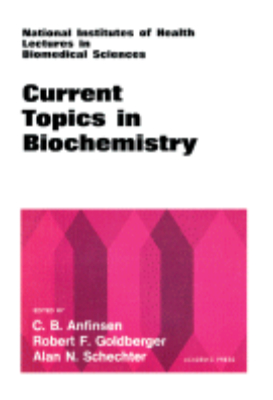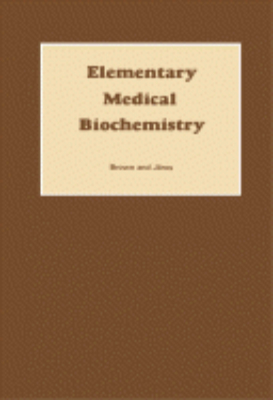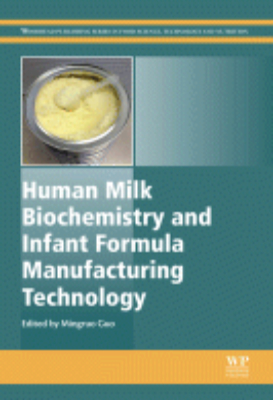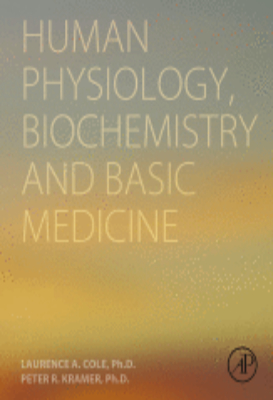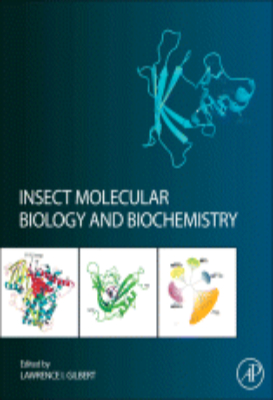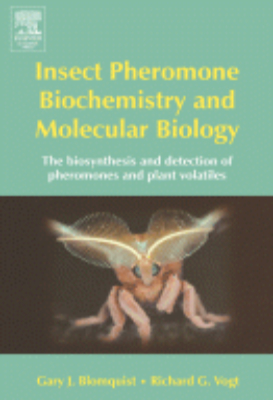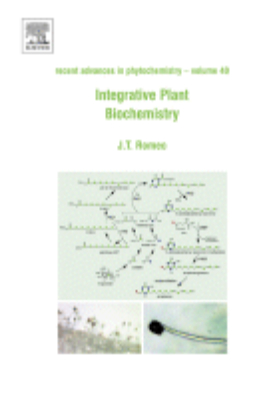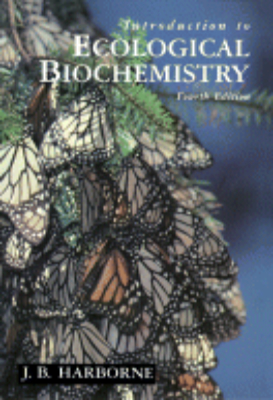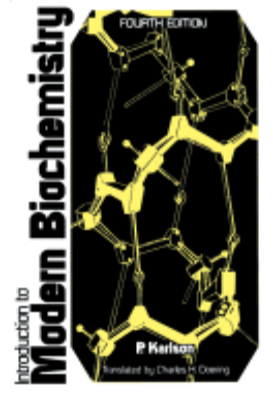E-Resources
Comparative Biochemistry: Volume 5 1963
Comparative Biochemistry: A Comprehensive Treatise, Volume V: Constituents of LifePart C focuses on the structure and distribution of amino acids, distribution and metabolism of inorganic nitrogen compounds, acid metabolism, and comparative biochemistry of halides. The selection first offers information on the structure and distribution of amino acids and the distribution and metabolism of inorganic nitrogen compounds. Discussions focus on proteinogenous amino acids, nonproteinogenous amino acids, general aspects of inorganic nitrogen metabolism, and distribution and metabolism of nitrate, nitrite, and molecular nitrogen, ammonia, and hydrazine. The text then tackles citric acid cycle and other cycles and comparative biochemistry of collagen. The publication examines photosynthesis and halides. Topics include transfer of energy along the photosynthetic chain, carbon dioxide reduction, photosynthesis and phosphorylation, quantum yields and the efficiency of light energy conversion, chlorine, bromine, and iodine. The selection is a dependable source of data for readers interested in the constituents of life.
Comparative Biochemistry: Volume 6 1964
Comparative Biochemistry: A Comprehensive Treatise, Volume VI: Cells and Organisms focuses on the complex composition of cells and organisms. The book opens with discussions on the biochemistry of morphogenesis. Bacterial germination and sporulation; seed germination; egg development of sea urchins; sporulation of cellular slime mold; and amphibian differentiation are described. The volume looks at the comparative aspects of metabolic control, biochemical basis of chemical needs, biochemistry of insect metamorphosis, and hormones in invertebrates. The text also highlights the presence of protein hormones in vertebrates. The differences between neurohypophyseal and melanocorticotropic hormones are identified. The book ends with discussions on the comparative biochemistry of digestive mechanisms and detoxication. Digestion in special physiological and systematic groups of vertebrates, carnivorous plants, and invertebrates; detoxication and adoption of terrestrial habitat; and the developmental aspects of detoxication are discussed. The book is a good source of data for readers wanting to explore the complex composition of organisms and cells.
Comparative Biochemistry: Volume 7 1964
Comparative Biochemistry: A Comprehensive Treatise, Volume VII: Supplementary Volume focuses on the processes, methodologies, and approaches involved in molecular biochemistry. The selection first offers information on expressions of the pentose phosphate cycle, including description, criteria for the presence of the pentose phosphate cycle, chordates, segmented worms, mollusks, echinoderms, roundworms, flatworms, algae, and higher plants. The text then ponders on chitin and mucosubstances, as well as the distribution and biochemistry of chitin, molecular structure and function of chitin, and chitin in relation to mucosubstances. The publication reviews the cellular aspects of active transport and hormones and behavior. Topics include relations between inorganic ions, sugar, amino acids, fatty acids, and bioelectric potentials; aspects of the regulation of the intracellular pool of free amino acids; hormones and permeability characteristics of living cellular membranes; and chemical nature of the structure responsible for the permeability characteristics of living membranes. The recording and measurement of behavior, role of hormones in the patterning of behavior, and hormones influencing behavior and the behavior most subject to hormonal influence and control are also discussed. The selection is a dependable source of data for readers interested in the processes, methodologies, approaches involved in biochemistry.
Current Topics in Biochemistry
National Institutes of Health Lectures in Biomedical Sciences: Current Topics in Biochemistry is based on a series of lectures dealing with current topics in biochemistry and more biologically or medically oriented topics. These lectures were organized for the benefit of young physicians who had just finished their clinical training but were several years out-of-date with respect to basic scientific research. The lecturers were asked, therefore, to present not only their own contributions to the field but also a broad review of recent developments in a large area of science. The lectures were surprisingly well attended not only by the associates for whom they had originally been designed but also by a large fraction of the NIH research community, specialists and nonspecialists alike. The lectures in this volume cover the following topics: genetic control of lipid metabolism; mammalian RNA-containing tumor viruses; current directions in research on cyclic AMP; the chemistry and biology of collagen; properties of the protein complex of striated muscle involved in the contractile process; cell surface receptor sites; and membrane structure and function.
Current Topics in Biochemistry 1973
Current Topics in Biochemistry 1973 is based on a series of lectures held at the National Institutes of Health dealing with biochemistry. This group of lectures is the most recent in a program, which was established in the mid-1960s, to review various research fields for the scientific community at the Institutes. The topics for these series were chosen to emphasize active fields of general interest for a diverse audience of scientists. The speakers were therefore encouraged to present an overview of their fields rather than a detailed discussion of current research problems. The lectures in present collection cover the following topics: the problem of predicting the conformation of a protein from a knowledge of its amino acid sequence; studies on the structure of glutamic dehydrogenase; immunologic approaches to the study of proteins; the NIH shift and its implications for the mechanism of biological oxidations; separation of transcribable and repressed chromatin; gene expression in animal cells; and plasma lipoproteins and apolipoproteins.
Data Analysis in Biochemistry and Biophysics
Data Analysis in Biochemistry and Biophysics describes the techniques how to derive the most amount of quantitative and statistical information from data gathered in enzyme kinetics, protein-ligand equilibria, optical rotatory dispersion, chemical relaxation methods. This book focuses on the determination and analysis of parameters in different models that are used in biochemistry, biophysics, and molecular biology. The Michaelis-Menten equation can explain the process to obtain the maximum amount of information by determining the parameters of the model. This text also explains the fundamentals present in hypothesis testing, and the equation that represents the statistical aspects of a linear model occurring frequently in this field of testing. This book also analyzes the ultraviolet spectra of nucleic acids, particularly, to establish the composition of melting regions of nucleic acids. The investigator can use the matrix rank analysis to determine the spectra to substantiate systems whose functions are not known. This text also explains flow techniques and relaxation methods associated with rapid reactions to determine transient kinetic parameters. This book is suitable for molecular biologists, biophysicists, physiologists, biochemists, bio- mathematicians, statisticians, computer programmers, and investigators involved in related sciences
Deterministic Versus Stochastic Modelling in Biochemistry and Systems Biology
"Stochastic kinetic methods are currently considered to be the most realistic and elegant means of representing and simulating the dynamics of biochemical and biological networks. Deterministic versus stochastic modelling in biochemistry and systems biology introduces and critically reviews the deterministic and stochastic foundations of biochemical kinetics, covering applied stochastic process theory for application in the field of modelling and simulation of biological processes at the molecular scale. Following an overview of deterministic chemical kinetics and the stochastic approach to biochemical kinetics, the book goes onto discuss the specifics of stochastic simulation algorithms, modelling in systems biology and the structure of biochemical models. Later chapters cover reaction-diffusion systems, and provide an analysis of the Kinfer and BlenX software systems. The final chapter looks at simulation of ecodynamics and food web dynamics. Key Features. Introduces mathematical concepts and formalisms of deterministic and stochastic modelling through clear and simple examples. Presents recently developed discrete stochastic formalisms for modelling biological systems and processes. Describes and applies stochastic simulation algorithms to implement a stochastic formulation of biochemical and biological kinetics"
Elementary Medical Biochemistry
Elementary Medical Biochemistry deals with the biochemical basis of the process of life, particularly, the principles of metabolic processes and the systems controlling these processes. The book reviews matter, energy, and the molecular transport processes in the body (known as diffusion, osmosis, filtration, active transport, circulation). The text also describes the medical uses of oxygen, and its functions together with hydrogen, carbon, and nitrogen. The book explains the importance of minerals in the body such as sodium, potassium, calcium, magnesium, iron, chlorine, phosphorus, sulfur, the trace elements (copper, manganese, cobalt), and other elements (nickel, cadmium, vanadium). Chemical reactions either form or break chemical bonds resulting in an uptake or release of energy. The book explains the various factors affecting the rate at which a chemical reaction occurs. These factors include temperature, concentration of reagents, or enzymes. The text also describes the metabolic fate of pyruvic acid, the glycolysis in muscle tissue, and the handling of end-products of metabolism by the body. The book is intended for students of nursing with diploma courses in general obstetrics and psychiatric nursing.
Elsevier’s Integrated Biochemistry
"Each title in the new Integrated series focuses on the core knowledge in a specific basic science discipline, while linking that information to related concepts from other disciplines. Case-based questions at the end of each chapter enable you to gauge your mastery of the material, and a color-coded format allows you to quickly find the specific guidance you need. Bonus STUDENT CONSULT access included with the text allows you to conveniently access the books content online clip content to your handheld device link to content in other STUDENT CONSULT titles and more! These concise and user-friendly references provide crucial guidance for the early years of medical training, as well as for exam preparation. Key Features. Includes case-based questions at the end of each chapter. Features a colour-coded format to facilitate quick reference and promote effective retention. Offers access to STUDENT CONSULT! At www.studentconsult.com, you'll find the complete text and illustrations of the book online, fully searchable ""Integration Links"" to bonus content in other STUDENT CONSULT titles content clipping for handheld devices an interactive community center with a wealth of additional resources and much more!"
Fearon’s Introduction to Biochemistry
Fearon's Introduction to Biochemistry, Fourth Edition provides information pertinent to the fundamental aspects of biochemistry. This book discusses the elements that occur in biological material and the biological properties of water and aqueous solutions. Organized into two parts encompassing 25 chapters, this edition begins with an overview of the classification, distribution, properties, and importance of the constituents of organisms. This text then examines the variable as well as the invariable elements of the biological aspect of all living organisms. Other chapters consider the most important inorganic biochemical compounds, including water, carbon dioxide, carbamates, carbonates, sulfates, silicates, phosphates, fluorides, and chlorides of the biochemical metals. This book discusses as well the chemical reactions associated with life. The final chapter deals with the inherent property of cells for self-construction, which enables them to grow and to preserve their character. This book is a valuable resource for biochemists, biologists, scientists, and research workers.
Genetics and Biochemistry of Antibiotic Production
* Emphasizes the molecular genetics of antibiotic production * Provides the latest information on the organization of genes encoding the biosynthetic pathway * Explores the mechanisms governing their expression and regulation * Examines the role of resistance genes in protecting organisms from their own lethal productsGenetics and Biochemistry of Antibiotic Production brings together the most up-to-date information on the genetic and biochemical mechanisms involved in antibiotic production. A collection of internationally recognized authors provide the latest information on the organization, function and regulation of genes responsible for antibiotic synthesis in a range of bacteria. This unique book groups antibiotics according to their biosynthetic affiliation, providing a background into evolutionaryrelationships while raising intriguing questions about the raison d'etre of antibiotics in nature.
Guide to Biochemistry
Guide to Biochemistry provides a comprehensive account of the essential aspects of biochemistry. This book discusses a variety of topics, including biological molecules, enzymes, amino acids, nucleic acids, and eukaryotic cellular organizations. Organized into 19 chapters, this book begins with an overview of the construction of macromolecules from building-block molecules. This text then discusses the strengths of some weak acids and bases and explains the interaction of acids and bases involving the transfer of a proton from an acid to a base. Other chapters consider the effectiveness of enzymes, which can be appreciated through the comparison of spontaneous chemical reactions and enzyme-catalyzed reactions. This book discusses as well structure and function of lipids. The final chapter deals with the importance and applications of gene cloning in the fundamental biological research, which lies in the preparation of DNA fragments containing a specific gene. This book is a valuable resource for biochemists and students.
Hormonal Steroids Biochemistry Pharmacology and Therapeutics
Hormonal Steroids: Biochemistry, Pharmacology, and Therapeutics, Volume I focuses on various research on steroids and their biological and medical involvements. Comprised of 60 chapters, the book presents the literature of various authors who have conducted research on the relationship between hormonal steroids and biochemistry, pharmacology, and therapeutics. The discussions start with the identification of steroids with hormone-like activities. This discussion includes the nature, compositions, properties, possible uses, and reactions of these hormones when exposed to different conditions and controlled environments. The book then proceeds with discussions on synthesis and metabolism of hormonal steroids. These discussions are supported by graphical representations, reviews, recommendations, and methodologies. The book then explains the control of synthesis and release of steroid hormones. This part notes the relationship of renal and adrenal hormones; the control and production of corticosterone; neurosecretion and control of the pituitary gland; and release of ovulating hormones. The book also highlights the mechanism of steroid action, noting the probable interrelationships of steroids, nonsteroids, intermediary metabolism, and inflammation. Various research are presented on the possible clinical applications of steroids. The text is a vital reference for readers who are interested in the study of hormones.
Human Milk Biochemistry And Infant Formula Manufacturing Technology
"Since infant formula substitutes for human milk, its composition must match that of human milk as closely as possible. Quality control of infant formula is also essential to ensure product safety, as infants are particularly vulnerable food consumers. This book reviews the latest research into human milk biochemistry and best practice in infant formula processing technology and quality control. Key Features. The most up to date reference on infant formula processing technology. Reviews both human milk biochemistry and infant formula processing technology for broad and applied coverage. Focusses exclusively on infant formulae"
Human Physiology Biochemistry and Basic Medicine
"Human Physiology, Biochemistry and Basic Medicine is a unique perspective that draws together human biology, physiology, biochemistry, nutrition, and cell biology in one comprehensive volume. In this way, it is uniquely qualified to address the needs of the emerging field of humanology, a holistic approach to understanding the biology of humans and how they are distinguished from other animals. Coverage starts with human anatomy and physiology and the details of the workings of all parts of the male and female body. Next, coverage of human biochemistry and how sugars, fats, and amino acids are made and digested is discussed, as is human basic medicine, covering the science of diseases and human evolution and pseudo-evolution. The book concludes with coverage of basic human nutrition, diseases, and treatments, and contains broad coverage that will give the reader an understanding of the entire human picture. Key Features. Covers the physiology, anatomy, nutrition, biochemistry and cell biology of humans, showing how they are distinguished from other animals. Includes medical literature and internet references, example test questions, and a list of pertinent words at the end of each chapter. Provides unique perspective into all aspects of what makes up and controls humans"
Insect Molecular Biology and Biochemistry
"The publication of the extensive seven-volume work Comprehensive Molecular Insect Science provided a complete reference encompassing important developments and achievements in modern insect science. One of the most swiftly moving areas in entomological and comparative research is molecular biology, and this volume, Insect Molecular Biology and Biochemistry, is designed for those who desire a comprehensive yet concise work on important aspects of this topic. This volume contains ten fully revised or rewritten chapters from the original series as well as five completely new chapters on topics such as insect immunology, insect genomics, RNAi, and molecular biology of circadian rhythms and circadian behavior. The topics included are key to an understanding of insect development, with emphasis on the cuticle, digestive properties, and the transport of lipids; extensive and integrated chapters on cytochrome P450s; and the role of transposable elements in the developmental processes as well as programmed cell death. This volume will be of great value to senior investigators, graduate students, post-doctoral fellows and advanced undergraduate research students. It can also be used as a reference for graduate courses and seminars on the topic. Chapters will also be valuable to the applied biologist or entomologist, providing the requisite understanding necessary for probing the more applied research areas related to insect control. Key Features. Topics specially selected by the editor-in-chief of the original major reference work. Fully revised and new contributions bring together the latest research in the rapidly moving fields of insect molecular biology and insect biochemistry, including coverage of development, physiology, immunity and proteomics. Full-color provides readers with clear, useful illustrations to highlight important research findings"
Insect Pheromone Biochemistry and Molecular Biology
"A valuable new reference on insect behavior, this exceptional new text delves into the primary sensory communication system used by most insects -- their sense of smell. Insect Pheromone Biochemistry and Molecular Biology covers how insects produce pheromones and how they detect pheromones and plant volatiles. Since insects rely on pheromone detection for both feeding and breeding, a better understanding of insect olfaction and pheromone biosynthesis could help curb the behavior of pests without the use of harmful pesticides and even help to reduce the socio-economic impacts associated to human-insect interactions. Key Features. Covers biochemistry and molecular biology of insect pheromone production. Explains pheromone production in moths, beetles, flies, and social insects. Describes pheromone and plant volatile reception"
Introduction to Ecological Biochemistry
"Ecological biochemistry concerns the biochemistry of interactions between animals, plants and the environment, and includes such diverse subjects as plant adaptations to soil pollutants and the effects of plant toxins on herbivores. The intriguing dependence of the Monarch butterfly on its host plants is chosen as an example of plant-animal coevolution in action. The ability to isolate trace amounts of a substance from plant tissues has led to a wealth of new research, and the fourth edition of this well-known text has consequently been extensively revised. New sections have been provided on the cost of chemical defence and on the release of predator-attracting volatiles from plants. New information has been included on cyanogenesis, the protective role of tannins in plants and the phenomenon of induced defence in plant leaves following herbivory. Advanced level students and research workers aloke will find much of value in this comprehensive text, written by an acknowledged expert on this fascinating subject. Key Features. The book covers the biochemistry of interactions between animals, plants and the environment, and includes such diverse subjects as plant adaptations to soil pollutants and the effects of plant toxins on herbivores. The intriguing dependence of the Monarch butterfly on its host plants is chosen as an example of plant-animal coevolution in action. New sections have been added on the cost of chemical defence and on the release of predators attracting volatiles from plants. New information has been included on cyanogenesis, the protective role of tannins in plants and the phenomenon of induced defence in plant leaves following herbivory"
Introduction to Modern Biochemistry: Fourth Edition 1975
Introduction to Modern Biochemistry, Fourth Edition provides an understanding of the chemical background of biological phenomena. This book discusses the concepts of generation and utilization of free energy. Organized into 23 chapters, this edition starts with an overview of the important role of amides in biochemistry. This text then explores the chemical structure of proteins and describes the methods of determining the amino acids sequence of proteins. Other chapters consider the role of genes in protein and enzyme synthesis. This book discusses as well the significance of the submicroscopic structure of the cell in biochemical reactions. The reader is also introduced to the chemistry of the carbohydrates. The final chapter deals with biochemical functions of various organs, including the digestive tract, liver, kidney, nervous system, muscles, and connective tissues. This book is a valuable resource for biologists, biochemists, scientists, researchers, and readers who are interested in the field of biochemistry.
Introduction to Modern Biochemistry: Second Edition 1965
Introduction to Modern Biochemistry, Second Edition focuses on the methodologies, processes, reactions, and technologies involved in biochemistry. The publication first takes a look at organic chemistry and biochemistry, amino acids, and peptides. Discussions focus on the determination of amino acid sequence in peptides, naturally occurring peptides, chemical properties, separation of amino acids, hydrocarbons as parent substances, functional groups, polymeric compounds, and reactions with biochemical significance. The text then ponders on proteins, enzymes and biocatalysis, and coenzymes. The manuscript examines nucleic acids and protein biosynthesis, metabolism of proteins, and porphyrins and hemins. Topics include chemical constitution of heme, significance and reactions of blood pigment, metabolism of aromatic amino acids, degradation to activated fatty acids, decarboxylation of amino acids, and biosynthesis and degradation of nucleotides. The text also ponders on carbon dioxide formation in the citrate cycle, fats and fat metabolism, and phosphatides, cerebrosides, and gangliosides. The book is a valuable reference for biochemists and researchers interested in the processes, approaches, and technologies involved in biochemistry.
Medical Biochemistry
"Thoroughly updated and in a new two-color format, this well- respected text presents the fundamentals of biochemistry and related topics to students pursuing a one- or two-semester course in pre-med biochemistry or medical programs. The second edition is equally applicable to other health-related fields such as clinical chemistry, medical technology or pharmacology. Medical Biochemistry, Fourth Edition, focuses on the foundations and clinically relevant applications of normal human biochemistry and pathology. Abundantly illustrated with four-color plates. Key Features. Revised chapters on molecular biology reflect the latest research in the field. Two color throughout with four color plates. Reference quality appendices include practical information on clinical lab parameters used to diagnose a range of diseases"
Metabolic Biochemistry and Molecular Biomechanics
The Mollusca, Volume 1: Metabolic Biochemistry and Molecular Biomechanics provides information pertinent to the advances in the traditional areas of biochemistry and in other developed areas that have become a part of molluskan biochemistry. This book discusses the developments in the various aspects of molecular biomechanics and environmental biochemistry. Organized into 11 chapters, this volume begins with an overview of the phylum Mollusca. This text then provides information about the general features of the main classes and their evolution, the anatomical organization of mollusks, and a classification of the primary taxonomic groups of mollusks. Other chapters consider the functional mechanical properties of two protein rubbers found in molluskan connective tissues. This book discusses as well the mechanical properties of molluskan mucins. The final chapter deals with the significance of quinone tanning in mollusks. This book is a valuable resource for researchers of the Mollusca and other phyla, as well as to teachers and qualified graduate students. Biochemists and physiologists will also find this book useful.
Methods in Applied Soil Microbiology and Biochemistry
In recent years, rapid technological advances and changes in agricultural management have taken place. These have yielded benefits to society but have also generated new and significant environmental problems. Novel questions and challenges relating to agricultural practice and soil microbial ecology, ecotoxicology, biotechnology, and bioremediation must be addressed. As a consequence, the fields of soil microbiology and biochemistry have been highlighted. This book provides a modern, authoritative, and comprehensive collection of methods for the study of soil microbiology and biochemistry. Classical and modern, aerobic and anerobic, laboratory and field-based methods are presented. Detailed techniques are given, but in addition the theoretical basis behind such methodology is described, so that the origins and principles of the techniques are clear to the reader. Particular emphasis has been placed on uniform, simple, and clear presentation of the different methods. With respect to bioremediation of soils, this work provides a unique bridge between general and applied soil microbiology and biochemistry, presenting an integrated discussion of concepts, theories, and methods. This book will be essential for all scientists and students actively involved in natural and environmental sciences and engineering, and for those working in industry, authorities, and consulting companies.
Muscle and Meat Biochemistry
Muscle and Meat Biochemistry teaches the different concepts and topics under the eponymous subject. The book covers the gross and detailed composition and structure of muscles and the relationship of the nervous system with the muscular system; muscle cell differentiation and growth; proteins of the thick filament; and the molecular structure and enzymatic activity of myosin. The text also discusses the proteins found in the thin filament - actin, troponin, and myosin; skeletal muscle growth; protein metabolism; and fiber types. The book also encompasses cardiac and smooth muscle; sarcoplasmic proteins; the connective tissues - collagen, elastin, and ground substance; and the postmortem changes during conversion of muscle to meat. The text is recommended for advanced undergraduate and graduate students, as well as for scientists who would like to know more about muscle biology, muscle physiology, and meat science.




